We use cookies to improve the services we offer you. By continuing to browse this site, you consent to keep them in accordance with our Privacy Policy.
×We use cookies to improve the services we offer you. By continuing to browse this site, you consent to keep them in accordance with our Privacy Policy.
× 1,234
1,234
 12 min
12 min

In a pool of brands and businesses, content is what can help stand out. According to MarketSplash, 81% of marketers consider interactive content to be much more effective in grabbing audience attention than static content.
Yet, you need to understand that interactive content is a pretty wide term that implies different formats. In the article, we’ve gathered the most prominent ways of using interactive content and some tips on its efficient application.
Interactive content is any digital or web-based content that requires active engagement. Instead of simply reading or watching, users interact with the content in various ways, such as clicking, swiping, typing, or giving voice commands. Examples include online quizzes, polls, simulations, games, and interactive videos.
The primary aim of interactive content is to capture users’ attention, provide a more immersive experience, and often gather feedback or data from the user. The necessity to apply this format of content is often seen from the results of a comprehensive user experience audit.
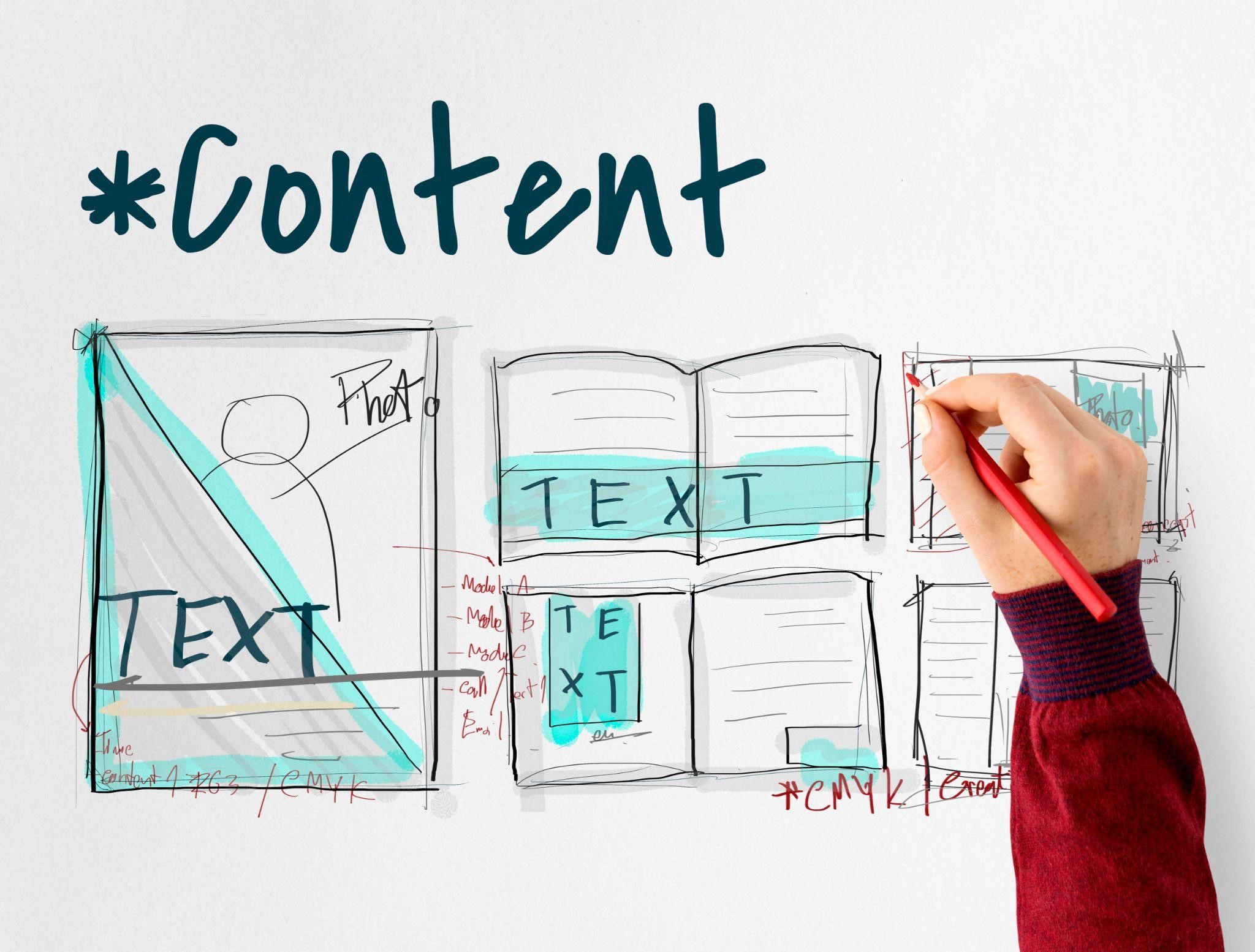 Image credit: Freepik
Image credit: Freepik
This form of content has gained popularity in the digital age because it can lead to higher user engagement and more memorable user experiences compared to static content. Let’s discover other benefits of this marketing effort:
One of the biggest perks of interactive content is its ability to reel in users. By offering a two-way conversation, you’re not just pushing information out; you’re inviting users to dive in and engage.
Interactive elements can help boil down tricky concepts into digestible bits. For instance, an interactive infographic can bring a statistic to life, making it easier for users to wrap their heads around it.
If users get a kick out of your content, they’re more likely to pass it on. Interactive content can boost your chances of going viral or, at the very least, racking up more shares.
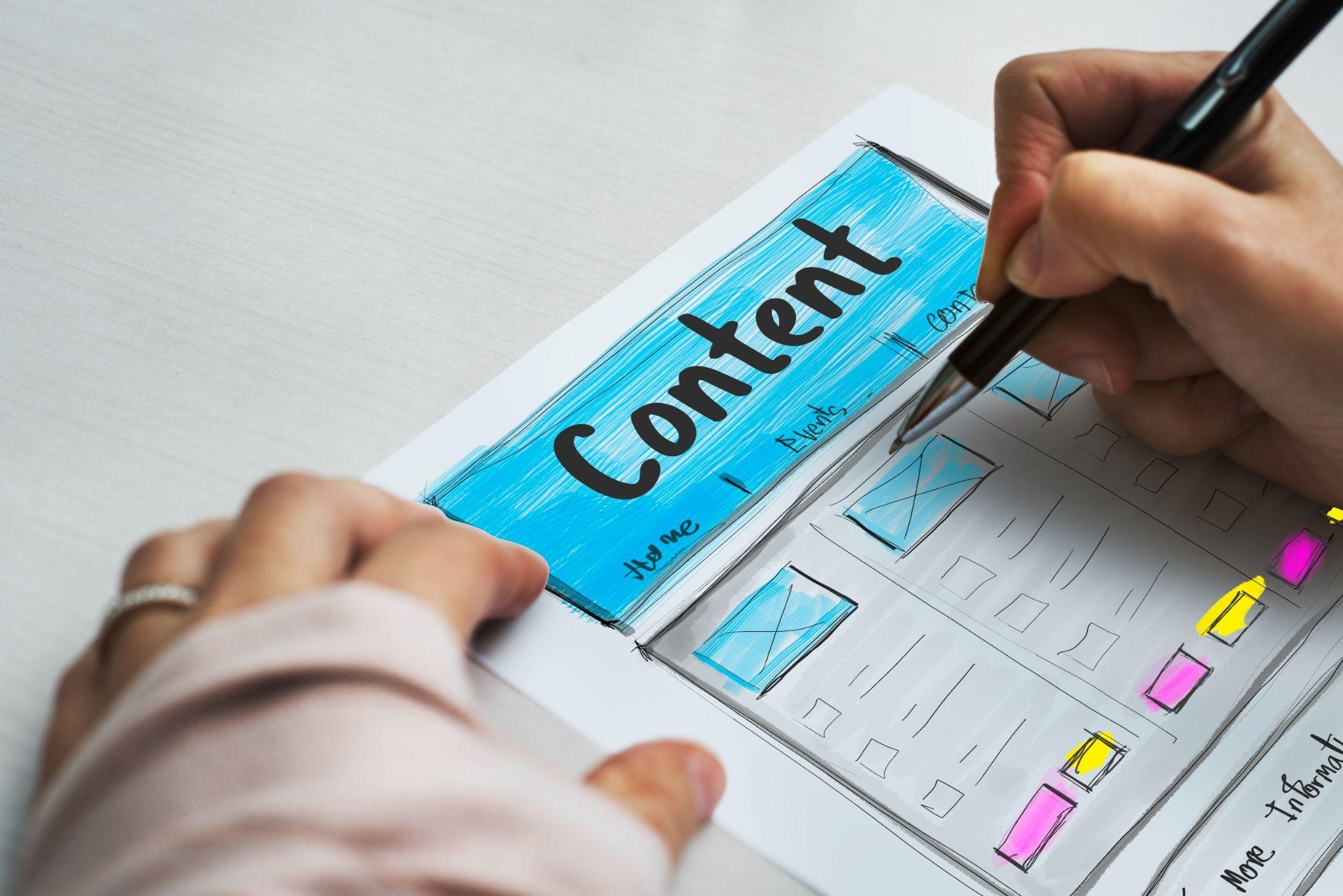
Image credit: Freepik
Quizzes, polls, and other interactive tools allow you to tap into what your audience thinks or feels. This can be invaluable in tailoring future content or offerings to their tastes.
The more time users spend fiddling around with your content, the better it is for your site metrics. Interactive elements can keep users hooked and encourage them to stick around longer.
By engaging users in a more profound way, you increase the odds of them taking desired actions, whether it’s a subscription to a newsletter, making a purchase, or any other conversion goal.
Interactive content paves the way for a two-way dialogue. When users feel they’re part of the conversation, it can foster a closer connection and build up trust with your brand.
Now that you know about the essence and benefits of interactive content, it’s high time to look at how it can be used for the purpose of driving your sales.
A subtle method of upselling and cross-selling is through product suggestions. The goal is to add goods or services that prospects are more likely to buy on their dashboard.
Artificial intelligence (AI) integrations that leverage a customer’s past purchases, browsing patterns, and other characteristics to promote related content are used to power product suggestions. This method ensures a customized experience.
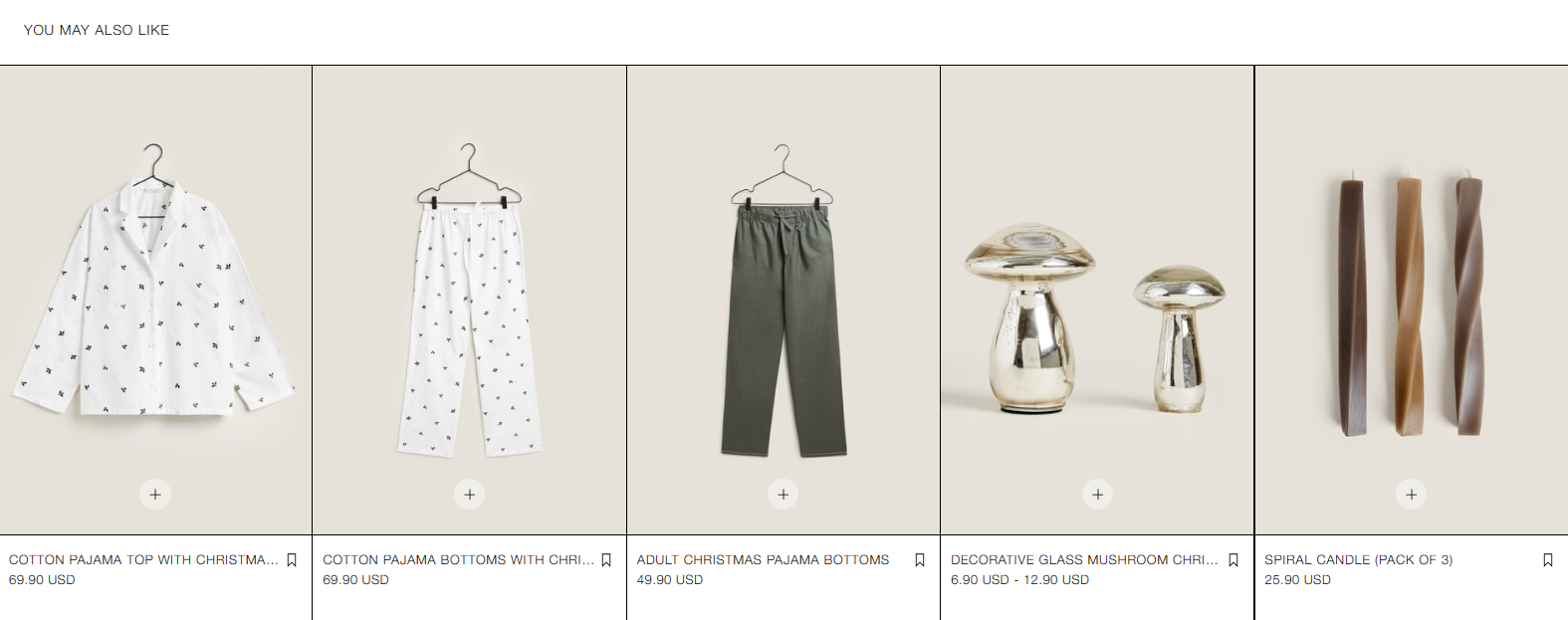
Screenshot taken on the official Zara website
This is probably one of the most basic methods for obtaining information and feedback from users. One-question surveys are a common tool used by marketers to boost social media engagement. Over time, polls and surveys may greatly boost sales. They put more emphasis on upgrading the product or service by getting to know your target market than they do on making direct sales. They also allow you to identify and solve consumer problem points.
Depending on the goals, various types of surveys can be employed:
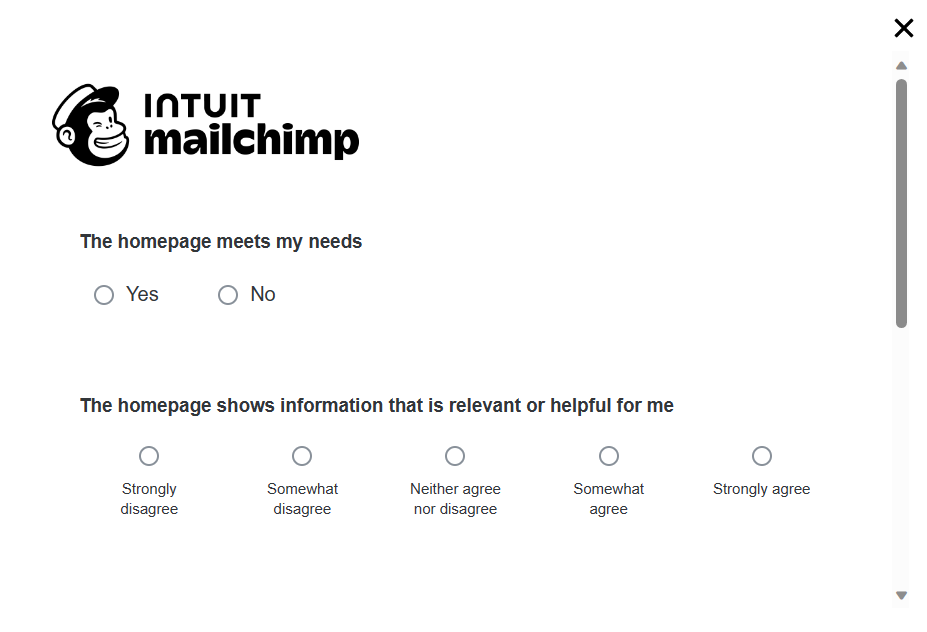
Screenshot taken on the official MailChimp website
Consumers adore quizzes. They, therefore, function well as lead magnets. Moreover, by offering genuine value and engagement, quizzes foster conversions.
Many businesses employ quizzes to point customers toward their finest goods or services. Ideas may come from anywhere:
For example, Garnier suggests taking a quiz with several easy questions to define a hair care suitable for you, gathering the email addresses of the participants.
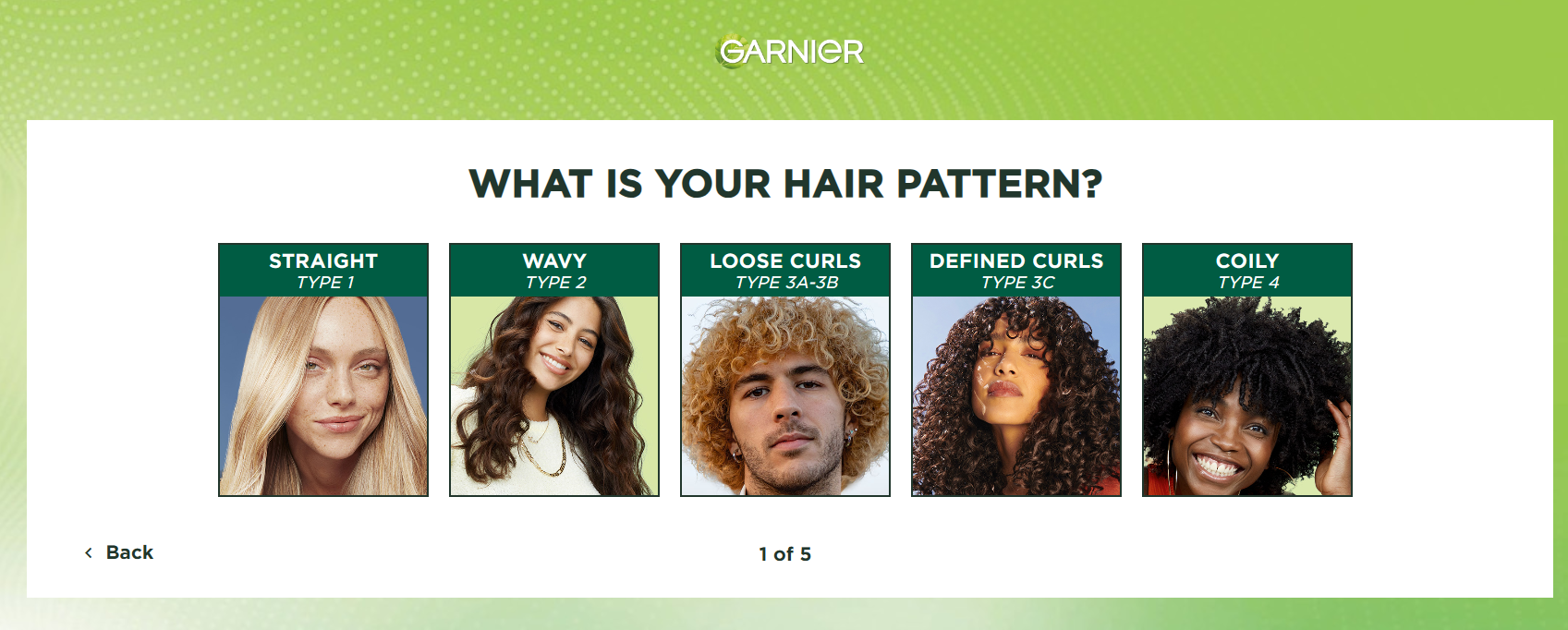
Screenshot taken on the official Garnier website
An interactive calculator that provides more information about the products a potential consumer wants to purchase can assist them in making well-informed decisions. They give raw, valuable information to store owners and B2B marketers in return, which they may utilize to direct their content marketing campaigns.
Note that during the contemplation and choice-making phases of the buyer’s journey, this tool may be quite helpful. It will increase conversion rates and assist prospective buyers in remembering your brand name.
HubSpot offers a return-on-investment (ROI) calculator to define how you can benefit from using a marketing hub.
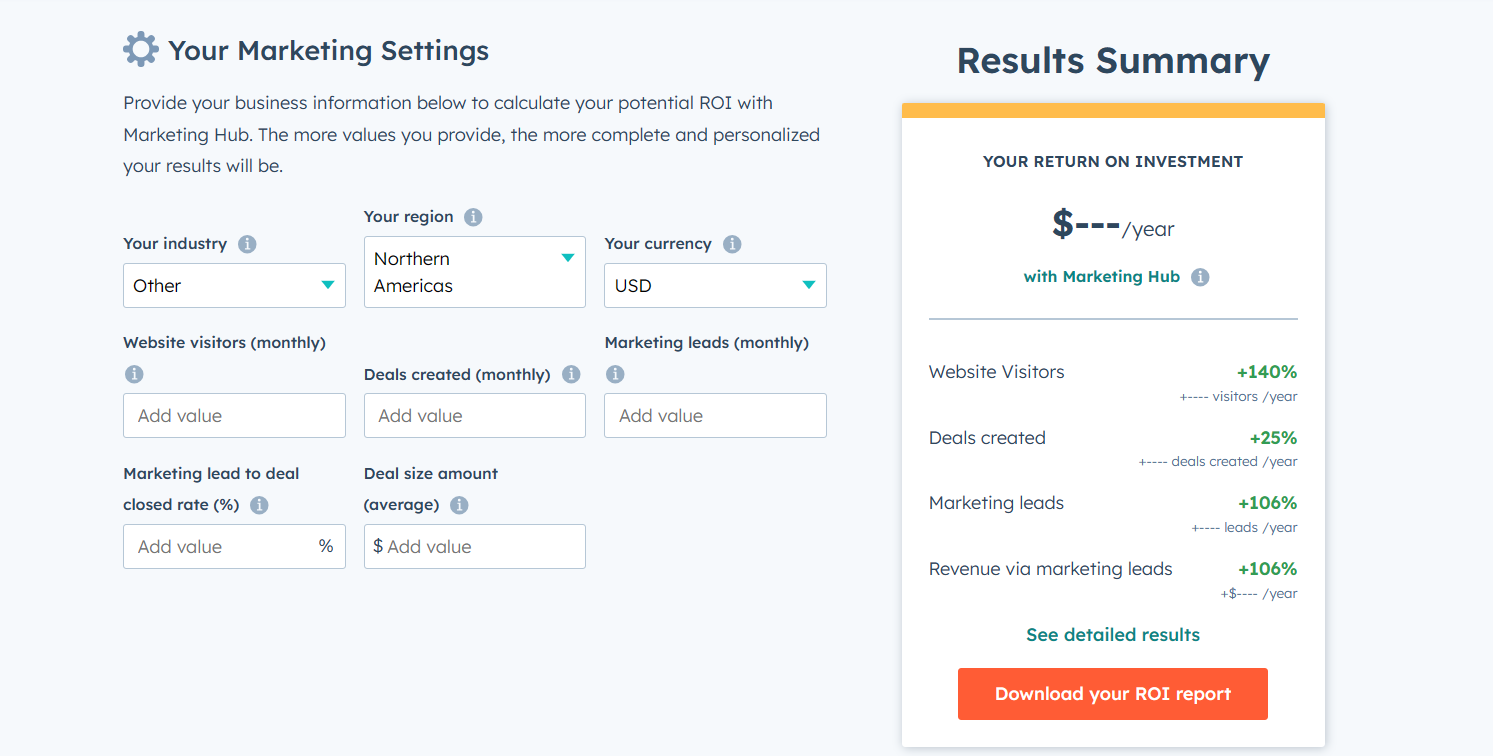
Screenshot taken on the official HubSpot website
Infographics are a useful tool for clearly and concisely explaining difficult concepts. Yet, interactive infographics do more. They often allude to functionality like scrolling, hovering, and clicking. It could even include tests, surveys, and videos. These elements convert an infographic from static to multidimensional, making it instantly more engaging and thrilling. You gain more interested clients as a consequence, together with improved eCommerce traffic, clicks, and purchases.
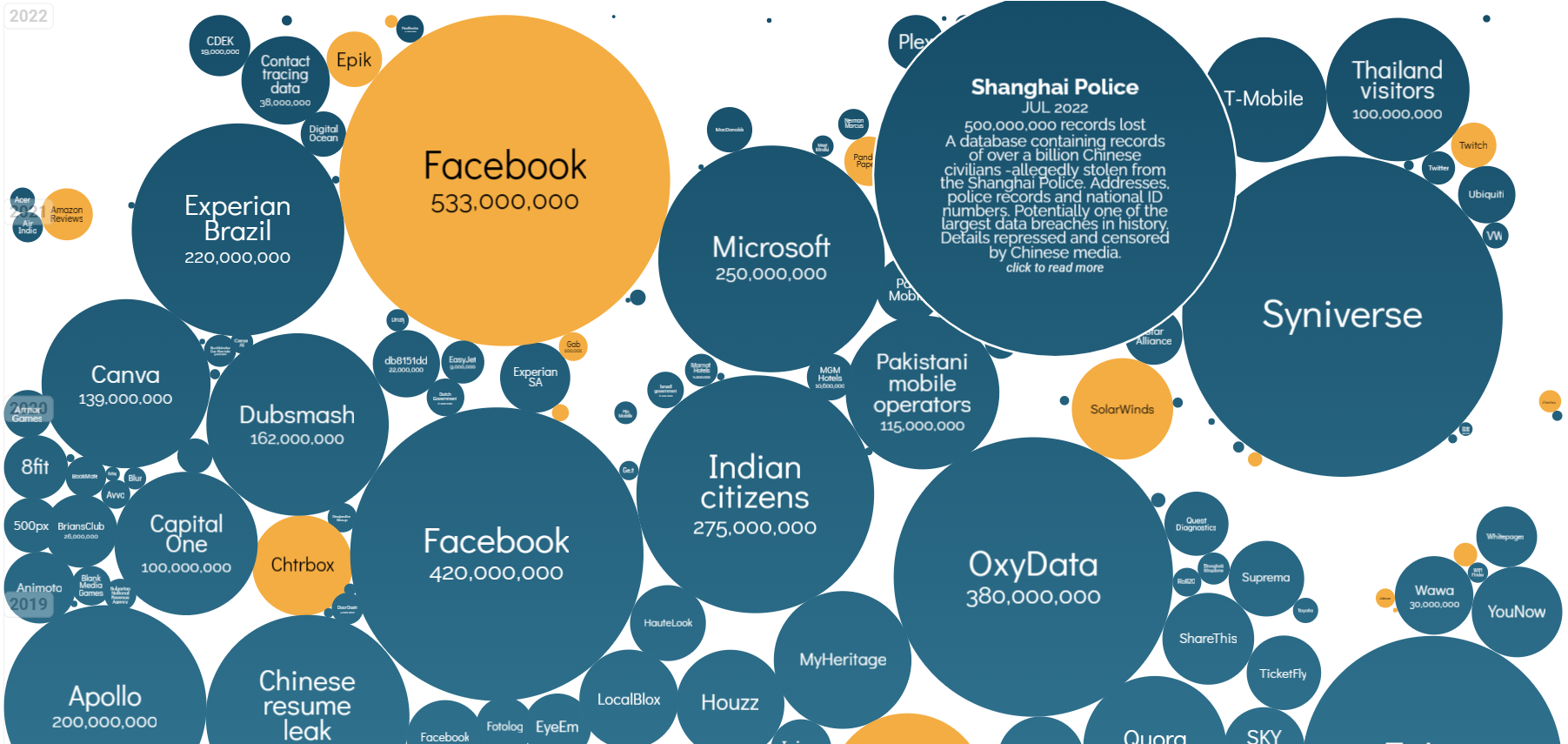
Screenshot taken on the official Information is beautiful website
Chatbots have advanced in comprehending your customers’ preferences using artificial intelligence. You can boost sales and strengthen bonds with clients by providing them with high-quality support. Besides, chatbots allow you to be available to your consumers at any time. In the long term, simple issue resolution also aids in attracting and keeping clients.
Increasing client happiness, directing consumers around your online business, giving them information, cross-selling and up-selling your products, and offering real-time customer support are just a few of the many tasks that a chatbot can aid with.
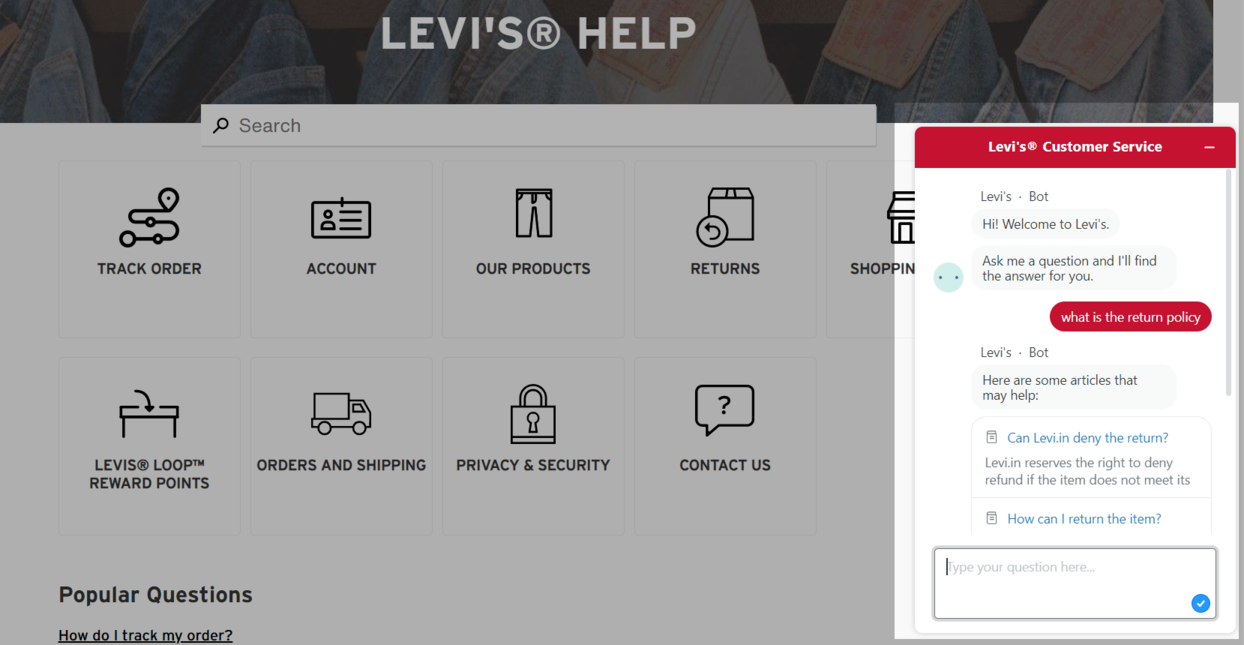
Screenshot taken on the official SendPulse website
A simple and effective technique to grab your audience’s interest, hold it, and possibly increase sales is through contests. Social media subscriptions, reposts, and comments are standard competition conditions.
Reposts are seen by their social media network, and some people inside it get curious. As a result, your following and level of brand awareness both increase dramatically. Additionally, genuine user-generated material from contests can boost the power of word-of-mouth marketing.
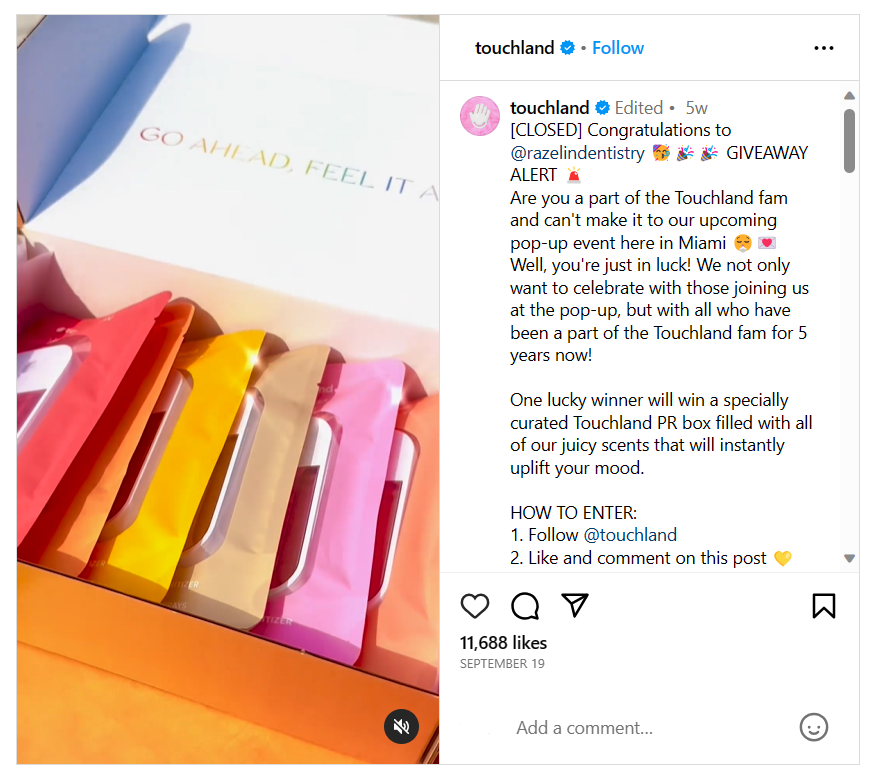
Screenshot taken on the official Touchland Instagram account
Online retailers typically use email marketing to promote their products, draw attention to sales, or notify customers when their carts have been abandoned. However, to improve your performance, you may provide your newsletter subscribers with some interactive experience. These emails may be used to surprise recipients, invite them to engage with your business and drive more traffic to your landing page.
Consider adding interactive features, such as rollovers to view items from various angles, hover effects to display product details, polls, surveys, etc. Be cautious not to add too many of these elements since this might increase the size of the email and make it harder to load.
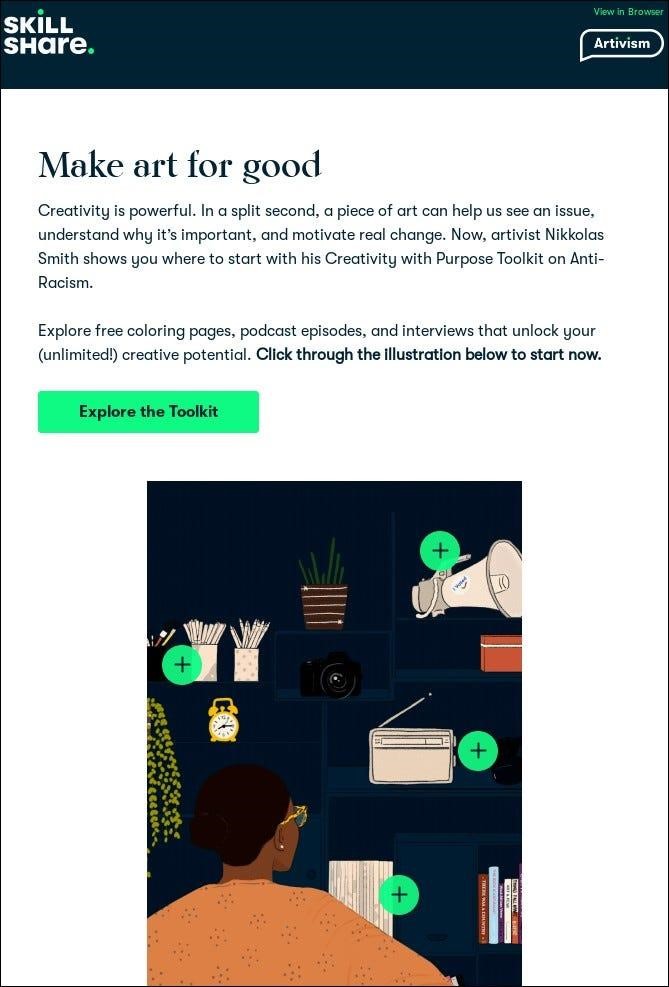
Screenshot taken on the official Really Good Emails website
By interactive view, we mean the various ways of viewing items on product pages. These might include product-finding tools, virtual try-ons, 360-degree rotating photographs, and 3D models. These solutions help clients with the purchase process in addition to providing information.
People learn more about the product, have more faith in the company and its offerings, and are more likely to make a purchase when they can engage with the descriptions and images in addition to just reading them. In fact, two out of three consumers said they would buy more things if augmented reality was implemented in the online store, according to Banuba.

Screenshot taken on the official Bagigia website
This is a type of multimedia content that allows viewers to interact with it while watching. These videos often incorporate clickable elements, decision points, hotspots, or embedded quizzes to involve the viewer in the narrative or learning process. Here are some of the features and characteristics of interactive videos:
The video promoting the LaCantina opening door system has a side menu switching videos and redirecting you to other pages. It also provides a function of changing view, allowing one to see the product from various sides.
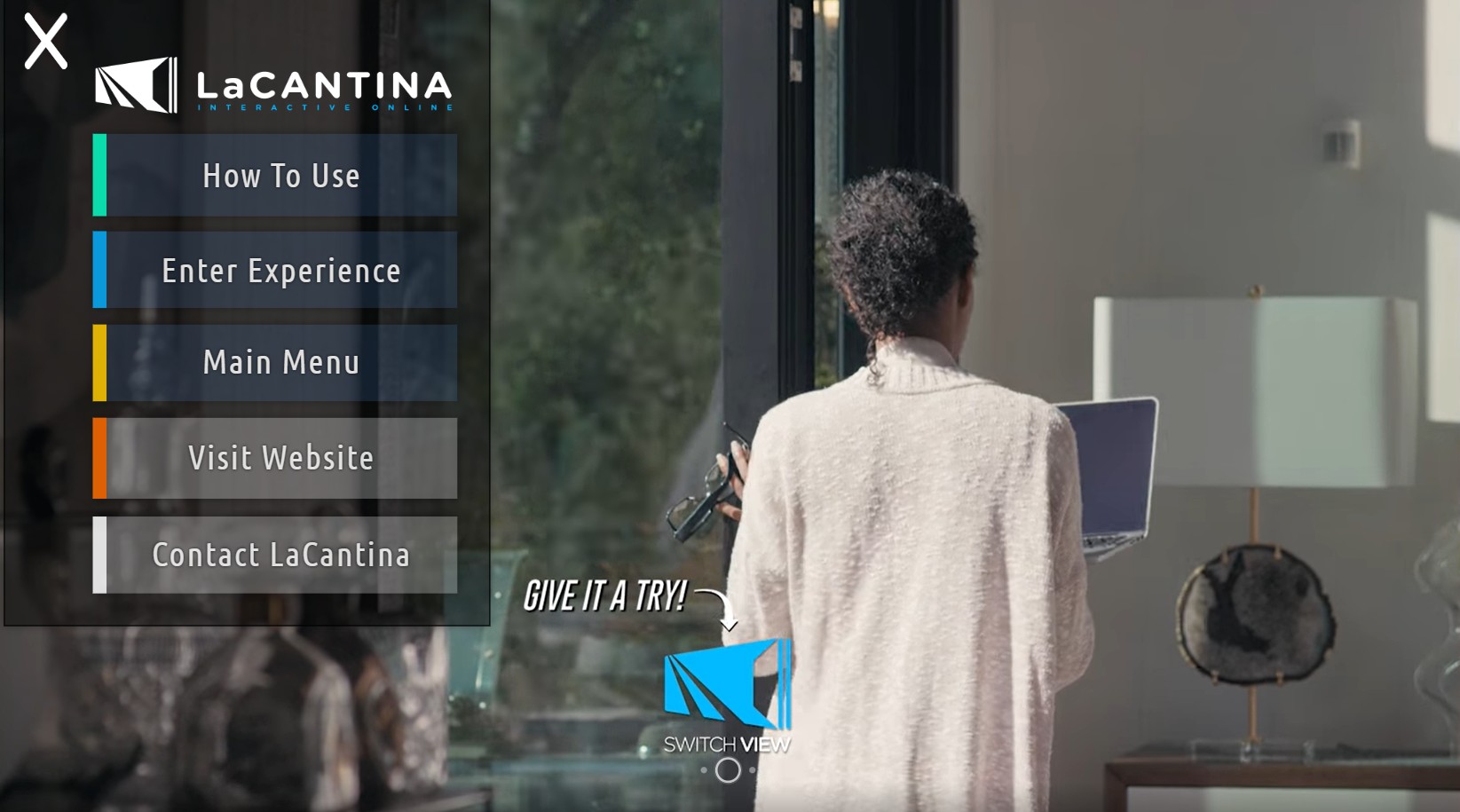
Screenshot taken on the official Eko website
If you still hesitate whether to use interactive content or not, look at the statistics. According to DemandGen, 62% of B2B marketers already use interactive content. At the same time, 45% of buyers say interactive content is among the top three most liked content types.
However, we have to mention the limitations associated with interactive content implementation. First, creating interactive content often requires specialized skills and tools and sometimes more time than traditional content. This can ramp up production costs.
Besides, over time, as technology and platforms evolve, interactive content might require updates or fixes to ensure it remains functional and relevant.
Be careful since not all topics or objectives are best served by interactivity. Sometimes, a simple, straightforward approach might be more effective.
Another consideration is adaptability to various devices. Mobile devices, due to screen size or other limitations, might not deliver the same interactive experience as larger screens. Designing for mobile might mean additional considerations or compromises.
So, while interactive content can be a powerful engagement tool, it’s vital to weigh these limitations against their benefits, ensuring that they align with your goals and the preferences of the audience.